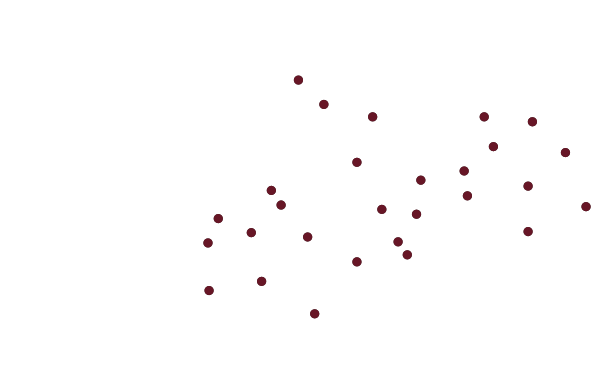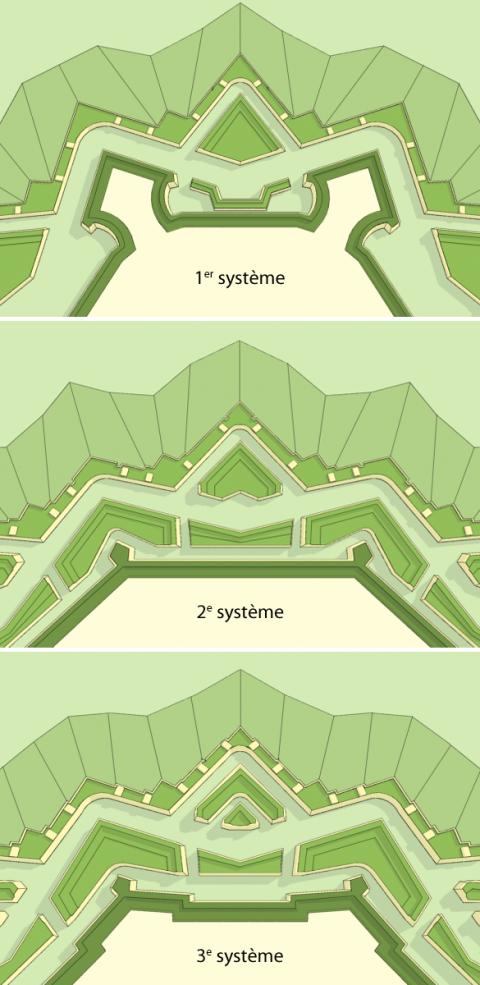Illustrated glossary
- Arsenal
- Barracks
- Bastion
- Bastioned tower
- Battery
- Capital
- Caponier
- Casemate
- Cavalier
- Citadel
- Cofferdam
- Cordon
- Corps de garde or Guardroom
- Corps de place
- Counterguard or coverface
- Counterscarp
- Covert way
- Crown
- Cunette
- Curtain wall
- Dame
- Defilade or to cover
- Demi-lune or ravelin
- Ditch
- Echauguette or watchtower
- Embrasure
- Enceinte or urban walls
- Entrenched camps
- Face
- Fausse braie
- First system
- Flank
- Fort
- Fortress
- Glacis
- Gorge
- Guérite
- Hornwork
- Loophole or Murder hole
- Lunette
- Nid-de-pie
- Orgues
- Orillion
- Parade ground
- Parapet
- Pas de souris stairway
- Portcullis
- Postern
- Rampart
- Redoubt
- Reduit
- Second system
- Stronghold
- Tenaille
- Third system
- Three systems
- To flank
- Traverse
- Wall walk
Three systems
Vauban built on the theories of his predecessor, Blaise de Pagan, adapting his inventions to each site. These improvements were known under the name of Vauban’s three systems. His principles of siege war, namely to rationally occupy the terrain, to use artillery wisely and to spare as many human lives as possible, remained in use for two centuries.
His fortification system evolved and was classified after his death into three distinct systems. Based on his growing experience of successfully attacking other strongholds, he improved these three fortification systems by successive touches. He increased the number of outer works to reinforce defence and delay breach into the body of the stronghold.
His fortification system evolved and was classified after his death into three distinct systems. Based on his growing experience of successfully attacking other strongholds, he improved these three fortification systems by successive touches. He increased the number of outer works to reinforce defence and delay breach into the body of the stronghold.

